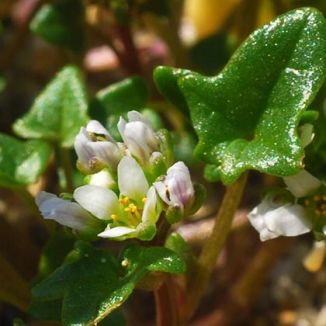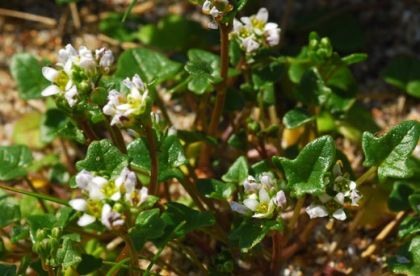Also known as Early Scurvy-grass, this is a small prostrate annual which grows on sandy, salty soils, mainly coastal. With very small 4-petalled white, sometimes lilac, flowers (4-6mm across) which bloom from February to June, it only grows to 20cm high. The shiny lower Leaves are long-stalked and heart-shaped, the stem leaves are ivy-shaped and fleshy, resistant to the salty conditions of their environment. This is a native plant and it belongs to the family Brassicaceae.
I first came across this wildflower in the sand dunes of Ballyteigue, Co Wexford in 2007 and I photographed it at that time.
If you are satisfied you have correctly identified this plant, please submit your sighting to the National Biodiversity Data Centre



